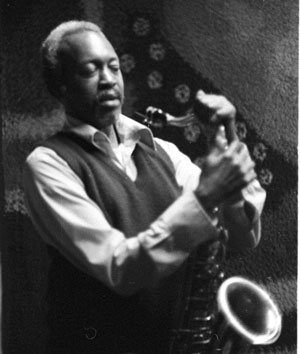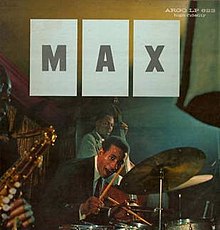"C M" – Hank Mobley
This happy uptempo swinger is classic '50s Mobley. It comes from his brief stint in Max Roach's quintet.
- Recording: Max Roach - MAX
- Recorded on: January 4, 1958
- Label: Argo (LP 623)
- Concert Key: F
- Vocal Range: , to
- Style: Swing (uptempo)
- Trumpet - Kenny Dorham
- Tenor Sax - Hank Mobley
- Piano - Ramsey Lewis
- Bass - George Morrow
- Drums - Max Roach
0:00
0:00
Buy MP3
Video
- Description
- Historical Notes
- Solos
- Piano Corner
- Bass Corner
- Drum Corner
- Guitar Corner
- Inside & Beyond
- Minus You
Like several other Mobley songs from the '50s, "C M" has a very rhythmic melody with plenty of space for comping. Though the form is essentially AABC, the last four measures of the two A sections are quite different—except the melodic rhythms are the same. The C section is the same as the second A section. The seventh measure of all four sections has the same melodic rhythm; stop-time figures occur on the first half of the bridge.
Though not based on a standard, this song's changes are standard-like; the first eight measures' changes recall the second eight measures of All God's Children Got Rhythm. The A and C section changes are truly four-measure phrases that arrive on the tonic only on the last measure. The last four measures of the second A and C sections have off-beat rhythm section figures on the head; the changes here are simplified for the solos.
On the recording, the horns play mostly in octaves. They harmonize on the seventh measure of the second A, B, and C section, while the tenor sax plays along with the rhythm section stop-time on the bridge. It's a simple two-horn arrangement, notated in all lead sheets.
You may notice that the changes played by pianist Ramsey Lewis and bassist George Morrow on the recording are not always the same as on our lead sheets. Some of the chords they play in the 5th through 7th measures of the second A section and C section clash with both the melody and the second harmony part. For example, Lewis plays B♭7 on the third beat of the fifth measure; the melody note here is A natural. We have decided to adapt the changes to fit the melody in this section.
Though not based on a standard, this song's changes are standard-like; the first eight measures' changes recall the second eight measures of All God's Children Got Rhythm. The A and C section changes are truly four-measure phrases that arrive on the tonic only on the last measure. The last four measures of the second A and C sections have off-beat rhythm section figures on the head; the changes here are simplified for the solos.
On the recording, the horns play mostly in octaves. They harmonize on the seventh measure of the second A, B, and C section, while the tenor sax plays along with the rhythm section stop-time on the bridge. It's a simple two-horn arrangement, notated in all lead sheets.
You may notice that the changes played by pianist Ramsey Lewis and bassist George Morrow on the recording are not always the same as on our lead sheets. Some of the chords they play in the 5th through 7th measures of the second A section and C section clash with both the melody and the second harmony part. For example, Lewis plays B♭7 on the third beat of the fifth measure; the melody note here is A natural. We have decided to adapt the changes to fit the melody in this section.
"MAX" was the only full album featuring this incarnation of the Max Roach band. The same lineup without Ramsey Lewis also recorded two sessions in December 1957, which formed some of the album "Max Plays Charlie Parker." The other session for the latter album, recorded in April 1958, features Kenny Dorham, George Coleman, and Nelson Boyd; Booker Little replaced Dorham soon after in Roach's band. The only other Max Roach-led recordings with Hank Mobley are a septet and a quartet session for Max's own Debut label in April 1953; these also feature Walter Davis, Jr. and, on the septet session, Idrees Sulieman and Gigi Gryce (the only recording with Mobley and Gryce playing together).
Related Songs
Email Send "C M" to a friend
Send this page to a friend via email. Add your name or email in the first field. In the second, add one or more email addresses, separated by a comma.

Hank Mobley
July 7, 1930 – May 30, 1986
Hank Mobley is one of the most acclaimed tenor saxophonists in modern jazz history. He is recognized by musicians and critics alike as one of the most important and eloquent jazz instrumentalists of all time. He recorded well over 100 of his own original compositions and left an indelible mark on the post-bop jazz scene. Read more...
There was a problem.
...

